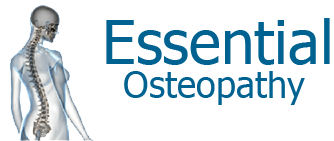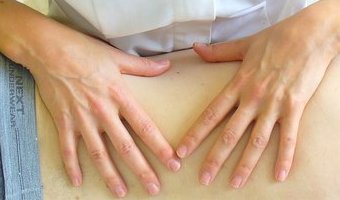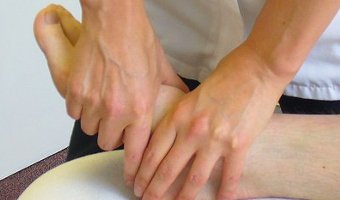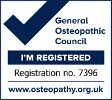Back pain - low back pain, disc problems, sciatica and arthritis
The majority of people experience back pain at some stage in their lives. There are a number of causes of low back and neck (spinally related) pain. Here are a few of the main ones (click on the blue bolded words to find out more):
- Discal problems (including prolapsed or herniated discs otherwise known as slipped discs) – discs are found between each vertebra of the spine. They are like tyres made of ligamentous material and fluid which act as shock absorbers to help spread the load when we lift and carry things. Discal problems occur most frequently occur in the lower back but they can also occur in the neck with symptoms radiating into the arm(s). If the problem is in the lower back, it is usually as a result of repetitive bending and lifting or over-doing it with sporting activities. This results in the degeneration of the outer layer of the disc which, in the case of a disc herniation, allows the inner gel-like material to push out which can lead to back pain and the compression of nerves. The nerve pain is often termed ‘sciatica‘ (pain down the back of the legs). Symptoms, which can include pain, weakness, tingling or numbness in arm(s) the thigh, leg(s) or either or both feet, can be aggravated by coughing and sneezing, prolonged sitting, lifting and bending. Read this blog article to find out more about disc problems.
- Facet joint strain – Facets are the joints at the back of the spine behind the vertebrae that link each spinal segment together (one on either side of the spine) and help to regulate movement of the spine. Patients can strain the capsule of these joints by doing a sudden movement such as lifting or twisting which can cause acute pain which is aggravated by turning over in bed, standing up from sitting and sometimes bending. People also get the same problem in their neck – often attributed to sleeping awkwardly or turning the head quickly resulting in what patients describe as a ‘cricked’ or ‘locked’ neck.
- Nerve compression or ‘Sciatica‘ – presents as leg pain radiating from the back into the buttock and down the back of the leg (or legs) and is caused by the compression of the lower lumbar nerves as they exit the lumbar spine. Nerve compression at the neck level can also cause similar symptoms in to the arm(s). When the nerve compression is in the leg(s) it is often called ‘sciatica’. Sciatica symptoms can also result from compression of these same nerves by the piriformis muscle in the buttock or by increased weight-bearing during pregnancy.
- Degenerative changes or wear and tear (Osteoarthritis) – takes place in all our backs but at different rates depending on what stresses and strains the person has put their back through in their lives. Sometimes people have advanced changes earlier in their lives than they might expect despite being fairly sedate but there is usually a link to some event (or multiple events) that leads to the ‘end of the reservoir of compensation’ and back pain. Such wear and tear can again result in nerve compression and thus ‘sciatica’ and leg pain which is often resultant of degenerative changes in the disc between the vertebrae (spondylosis) and/or the fact joints at the back of the spine (spondyloarthrosis). Otherwise it may indicate arthritis. It is important to get these symptoms checked-out and treated, particularly if you are weak in both legs, you are finding it difficult to walk more than a certain distance, there is numbness in the saddle area or you have had recent changes in urination or bowel movements (although the latter can be due to medication). This may indicate spinal stenosis (parts of the spine putting pressure on to the spinal cord – click here to read the blog article about it).
Osteopathic treatment of back pain depends on the diagnosis and severity of the symptoms but usually includes soft-tissue massage, traction and appropriate joint articulation and manipulation to ease stiff joints and stretches to relieve the tight muscles. Exercises and postural advice is also given together with advice on pain-relieving medication and the use of ice and/or heat to ease the symptoms.
Click here to read my article(s) on preventing back pain by choosing a good mattress or by improving your core strength
Mandy’s testimonial (and more if you click here):
“I have suffered lower back pain and hip pain for several months and had tried physio with limited success before I went to see Fiona. After only one session with Fiona I noticed an enormous difference; my pain and stiffness were greatly reduced and immediately I felt more flexible. Fiona takes the time to get to know you as an individual and for the first time – I felt someone had really got to the root of my back problem. As a result, I then understood how to help myself between osteopathy sessions and could feel the exercises Fiona gave me to do also made a difference. After a few osteopathic sessions I was glad to be back running again and did a PB 10K time! Fiona has a lovely relaxed manner which puts you at ease and and is extremely thorough and knowledgeable which inspires trust and confidence in her.”
Mandy, Primary School Teacher and runner
Useful links
Arthritis Research UK: back pain
NICE Guidelines – Low back pain: Early management of persistent non-specific low back pain states that ‘a course of manual therapy, including spinal manipulation, comprising up to a maximum of nine sessions over a period of up to 12 weeks’







